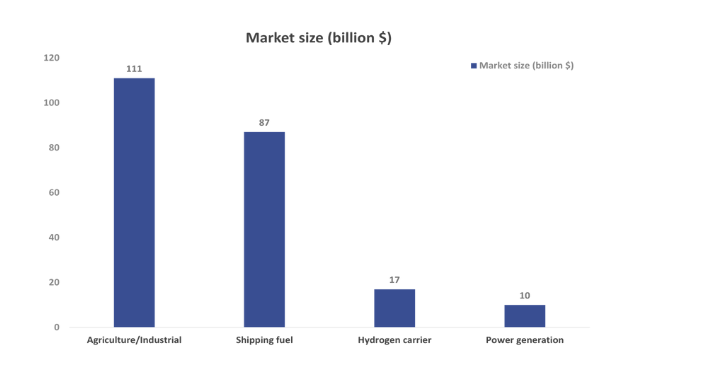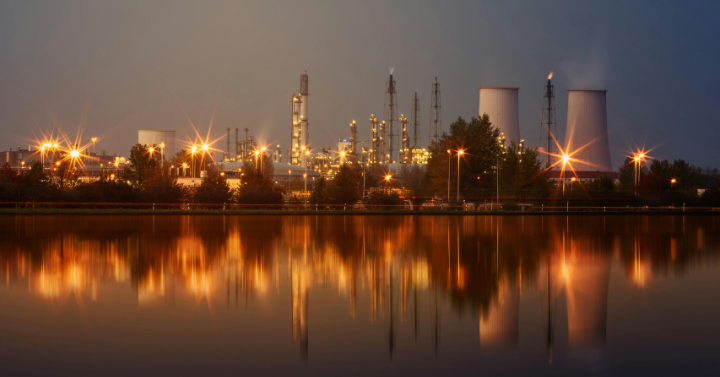As the global community steers toward a greener future, the search for alternative fuels intensifies. Amongst the promising contenders today, hydrogen and ammonia stand out.
While hydrogen boasts a high energy density on a mass basis, its immediate feasibility as a fuel is hindered by the requirement for large storage volumes and a lack of infrastructure. Safely transporting hydrogen across the globe is a significant challenge and involves difficulties in repurposing the existing bulk carriers and pipelines. Additionally, ensuring the safety of storing large quantities of hydrogen in transport hubs presents further complications.
In fact, these very limitations of hydrogen redirected engineers to consider ammonia as a potential fuel. The concept of utilizing ammonia as a carrier for hydrogen gained momentum with the recognition of the technological capability to split the ammonia molecule back into its components (Hydrogen and Nitrogen) at the point of use. Ammonia is easy to handle and can be transported in bulk, and systems for moving ammonia are already well established. This is not the case with hydrogen, which poses corrosion challenges with respect to steel pipelines and other containers.
A case in point is Japan which is taking a bold step toward embracing ammonia as a solution to lower greenhouse gas emissions. With a goal to achieve net-zero emissions by 2050, Japan plans to prioritize clean energy derived from ammonia. In the short term, the country aims to import low-carbon fossil-based ammonia, transitioning to renewable ammonia beyond 2030. This forward-thinking approach positions ammonia as a strategic component in Japan’s efforts to combat climate change.
Uses of Green Ammonia
Around 70% of ammonia is used for fertilizers; the rest is used for industrial applications. Demand for ammonia is expected to grow significantly over the coming years as the population expands.

Figure 1.0: Forecast Market Size of Ammonia Worldwide in 2050, by Application
Challenges in Scaling Ammonia Today
Technological readiness: While the technology for creating ammonia through the Haber-Bosch process is well established, applications using ammonia as fuel in internal combustion engines (ICE) and fuel cells (FCs) are still in the development and research stages. Real-world applications in the shipping industry remain limited.
Costs: The current estimated production costs for new plants generating renewable ammonia fall within the range of USD 720–USD 1,400 per tonne, with projections indicating a decline to USD 310–USD 610 per tonne by 2050. In comparison, the production costs for natural gas-based and coal-based ammonia presently range from USD 110 to USD 340 per tonne. However, incorporating carbon capture and sequestration would introduce an additional USD 100–USD 150 per tonne, elevating low-emission fossil-based production costs to USD 210–USD 490 per tonne.
More than half of the cost of ammonia production stems from renewable energy, and for ammonia to be competitive, renewable energy prices need to be USD 20 per megawatt-hour (MWh) or lower. Additionally, a CO2 penalty of USD 60–USD 90 per tonne of CO2 may be necessary to facilitate the transition toward low-carbon ammonia. In the absence of a carbon pricing mechanism, the cost of renewable ammonia must decrease to maintain competitiveness in the global market.
Regulatory hurdles: Ammonia faces regulatory challenges and does not have approval as a fuel from any regulatory body, including the International Maritime Organization (IMO) and power sector authorities. Protocols for safe handling, product standards, emission testing, and verification must be established before ammonia can gain broad regulatory approval.
The Road Ahead for Green NH3
As the world seeks sustainable alternatives to traditional fuels, green ammonia emerges as a potential frontrunner. While challenges in technology, costs, and regulation persist, ongoing research and development efforts are paving the way for ammonia to play a transformative role in the global energy landscape. As we navigate toward a cleaner, greener future, the potential antidote to fossil fuels might just lie in the simplicity of one nitrogen atom and three hydrogen atoms—in the form of green ammonia.
Want energy industry updates, expert analysis, insider tips, and webinar invites in your inbox? Click here to sign up for the Kline newsletter.

